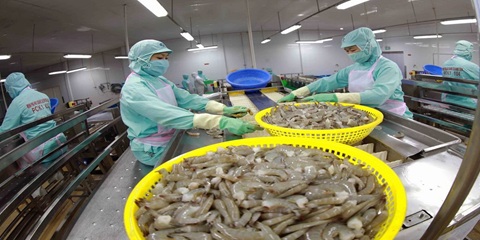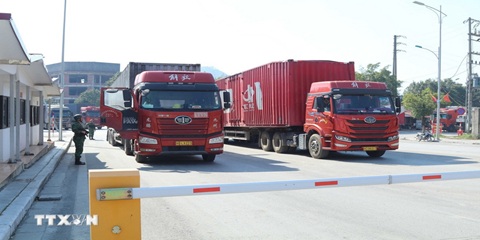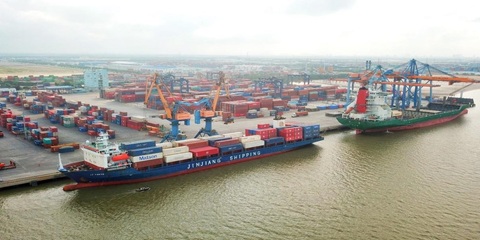Want to be in the loop?
subscribe to
our notification
Business News
BANKS UNDER PRESSURE TO INCREASE CHEAP CAPITAL SOURCES
Banks are under pressure to increase cheap capital sources, as the cost of capital is a vital factor for banks' profit growth.
The cheap capital sources have become more important for banks when they have to reduce lending interest rates to boost credit growth, while still having to increase savings interest rates to lure depositors for the past three months. In this context, the cheap capital helps banks reduce lending rates to increase competitiveness while still maintaining high net interest margins (NIM).
At banks, most of the cheap capital source comes from Current Account Savings Account (CASA), or non-term deposits, which has an interest rate of only around 0.2 per cent per year, much lower than that of term deposits.
However, it is not easy for banks to increase the cheap capital source. According to Q2 2024 financial reports of 28 banks, their average CASA ratio decreased slightly from 15.6 per cent at the beginning of this year to 15.4 per cent at the end of June. Specifically, CASA ratio of 12 banks reduced while 12 banks recorded an increase and at four banks it remained unchanged.
The reports also showed that up to 17 out of 28 banks had a CASA ratio of below 15 per cent.
At BacABank, as of the end of June 2024, the amount of non-term deposits decreased sharply by 41.6 per cent, causing the CASA ratio to drop sharply from 4.4 per cent at the beginning of the year to 2.6 per cent.
At PGBank, the amount of non-term deposits decreased by 12.2 per cent during the period, causing the CASA ratio to drop to only 14.4 per cent, compared to 17.2 per cent at the beginning of the year.
The decline in CASA ratio was not only seen in small and medium-sized banks, but also big banks, such as MB, Techcombank and Vietcombank, who were always at the top of the banking system in attracting cheap capital, and they have also recorded a decrease in demand deposits in the past six months.
Specifically, although holding the leading position in terms of CASA ratio, MB's CASA ratio by the end of June was only 37.8 per cent, compared to 39.6 per cent at the end of 2023.
Techcombank's non-term deposits also reduced by nearly VNĐ1.4 trillion in the past six months, causing the bank’s CASA ratio to decrease by 2.5 percentage points to 37.4 per cent.
According to experts, with a low CASA ratio, banks are at risk of having to rely heavily on capital from different sources to maintain their business operations. A low CASA ratio can also increase the risk of financial risks due to market fluctuations.
When banks cannot increase lending rates and reduce deposit rates, banks with high CASA ratios will be able to cope with the narrowing of NIM. Therefore, banks are actively attracting the cheap deposits to both reduce pressure on NIM and increase operational efficiency.
Từ Tiến Phát, General Director of ACB said, according to market trends, increasing interest rates was inevitable. However, banks must control closely and could not increase deposit interest rates rapidly as it would cause rising capital costs and affect credit growth. Banks with large amounts of CASA would have an advantage to cut capital costs.
A representative of MSB said that the bank would continually aim to promote the CASA ratio until the end of this year through introducing more attractive products and services. MSB targets a CASA ratio of 35-40 per cent in the 2023-27 period.
Source: VNS
Related News

VIETNAM’S SEAFOOD EXPORTS HIT OVER US$10 BILLION IN JAN-NOV
Seafood export revenue in November alone amounted to nearly US$990 million, up 6.6% year-on-year. Key product groups posted solid gains. Shrimp exports rose 11.7% to over US$385 million, supported by strong demand for whiteleg shrimp and lobster. Tra fish shipments increased 9.7% to almost US$197 million, while marine fish, squid, and mollusk exports maintained their recovery.

VIETNAM’S AGRO-FORESTRY-FISHERY EXPORTS HIT NEW RECORD IN JAN-NOV
Vietnam’s agro-forestry-fishery export revenue reached an estimated US$64.01 billion in the first 11 months of 2025, up 12.6% year-on-year and surpassing the full-year record of US$62.4 billion set in 2024. Agricultural exports reached US$34.24 billion, up 15% year-on-year, while livestock products brought in US$567.4 million, a 16.8% increase. Seafood exports rose 13.2% to US$10.38 billion, and forestry products earned US$16.61 billion, up 5.9%.

HANOI REPORTS RECORD-HIGH BUDGET REVENUE IN 2025
Hanoi’s budget revenue is estimated to reach VND641.7 trillion in 2025, the highest level ever recorded and nearly 25% above the revised target, according to a report by the municipal government. Data from the city’s socioeconomic performance review shows that total state budget collections in 2025 are projected to reach 124.9% of the adjusted plan and rise 24.9% from 2024, the Vietnam News Agency reported.

VIETNAM, CHINA TO PILOT TWO-WAY CARGO TRANSPORT AT LANG SON BORDER
Vietnam and China will launch a one-year pilot program on December 10 to allow two-way cargo transport through the Huu Nghi–Youyi Guan international border gates in Lang Son Province, reported the Vietnam News Agency. The Dong Dang-Lang Son Economic Zone Management Board said the trial aims to reduce transport costs and improve customs clearance capacity.

VIETNAM’S IMPORT-EXPORT VALUE NEARS US$840 BILLION IN JAN-NOV
The total value of Vietnam’s imports and exports was nearly US$840 billion between January and November this year, the highest level ever recorded, according to the National Statistics Office. In its latest report on the country’s socio-economic performance, the National Statistics Office highlighted a series of positive economic indicators, with trade emerging as one of the strongest drivers of growth.

OVER 19 MILLION INTERNATIONAL VISITORS COME TO VIETNAM IN JAN-NOV
Vietnam received more than 19.1 million international visitors in the first 11 months of 2025, a 20.9% increase year-on-year and the highest level ever recorded, according to the National Statistics Office. The figure surpasses the full-year record of 18 million arrivals set in 2019, before the Covid-19 pandemic. Nearly two million foreign visitors arrived in November alone, up 14.2% from October and 15.6% from the same period last year.
























